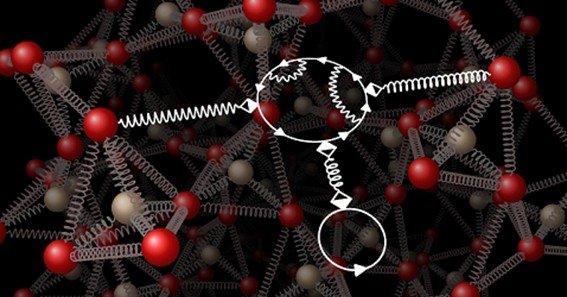In this interesting introduction for why thermal ab initio theory is important, we delve into how modern computational methods are pushing the boundaries of science. Thermal ab initio theory integrates the rigorous principles of quantum mechanics with the effects of temperature, allowing researchers to explore molecular dynamics and material properties under realistic conditions. This approach not only enhances our theoretical understanding but also has practical implications in fields ranging from catalysis to semiconductor design.
Understanding Thermal Ab Initio Theory
What Is Thermal Ab Initio Theory?
Thermal ab initio theory is an extension of traditional ab initio (from first principles) methods. While standard ab initio calculations solve the Schrödinger equation for a system at absolute zero, thermal approaches incorporate finite temperature effects. This inclusion is crucial because most real-world processes—chemical reactions, phase transitions, and material behavior—occur at nonzero temperatures.
Why Is It Important?
-
Realistic Modelling: Traditional calculations at 0 K do not account for entropy and thermal excitations. Including temperature effects provides a more accurate description of how molecules and materials behave under normal conditions.
-
Material Design: Industries such as aerospace, electronics, and energy rely on precise knowledge of thermal properties. Thermal ab initio methods aid in predicting behaviors like conductivity, thermal expansion, and phase stability.
-
Chemical Reactions: Many reaction mechanisms are highly temperature-dependent. Modeling these reactions accurately can lead to better catalysts and more efficient chemical processes.
-
Advancing Theoretical Chemistry: This approach bridges the gap between quantum mechanical models and statistical thermodynamics, leading to improved predictions and deeper theoretical insights.
Key Applications and Benefits
Enhancing Research and Development
Researchers use thermal ab initio theory to simulate conditions that mimic real-life environments, allowing for the development of better materials and understanding complex chemical phenomena. For instance:
-
Catalyst Optimization: By simulating reactions at different temperatures, scientists can design catalysts with improved efficiency.
-
Nanotechnology: The stability and performance of nanomaterials under various thermal conditions can be predicted with high accuracy, aiding in the design of nanoscale devices.
-
Environmental Science: Studies on pollutant breakdown and atmospheric chemistry are enhanced by models that factor in temperature fluctuations.
Bridging the Gap Between Theory and Experiment
Thermal ab initio calculations help reconcile experimental observations with theoretical predictions. By incorporating thermal motion and entropy, these methods provide a more comprehensive picture that often explains discrepancies between 0 K models and real-world measurements.
Frequently Asked Questions
1. What distinguishes thermal ab initio theory from standard ab initio methods?
Standard ab initio methods calculate properties at absolute zero, ignoring thermal effects. In contrast, thermal ab initio theory incorporates temperature into quantum calculations, accounting for entropy and dynamic behavior observed under realistic conditions.
2. Why is thermal ab initio theory important for material design?
It provides accurate predictions of thermal properties such as conductivity, thermal expansion, and phase transitions. This information is vital for designing materials that perform reliably in real-world operating conditions.
3. Can thermal ab initio theory be applied to chemical reaction modeling?
Yes. By considering temperature, thermal ab initio methods allow researchers to model reaction pathways and energy barriers more accurately, leading to improved catalyst design and a better understanding of reaction mechanisms.
4. How does the inclusion of temperature effects improve theoretical predictions?
Temperature influences molecular vibrations, electronic excitations, and phase behavior. Incorporating these effects leads to predictions that align more closely with experimental data, providing a more realistic model of molecular and material behavior.
5. Where can I learn more or apply thermal ab initio methods?
Numerous academic journals, conferences, and online courses discuss advanced computational techniques. Additionally, software packages like VASP, Gaussian, and Quantum ESPRESSO now include modules for thermal corrections.
Keep reading for more information on ft-991a-tail-eliminate










